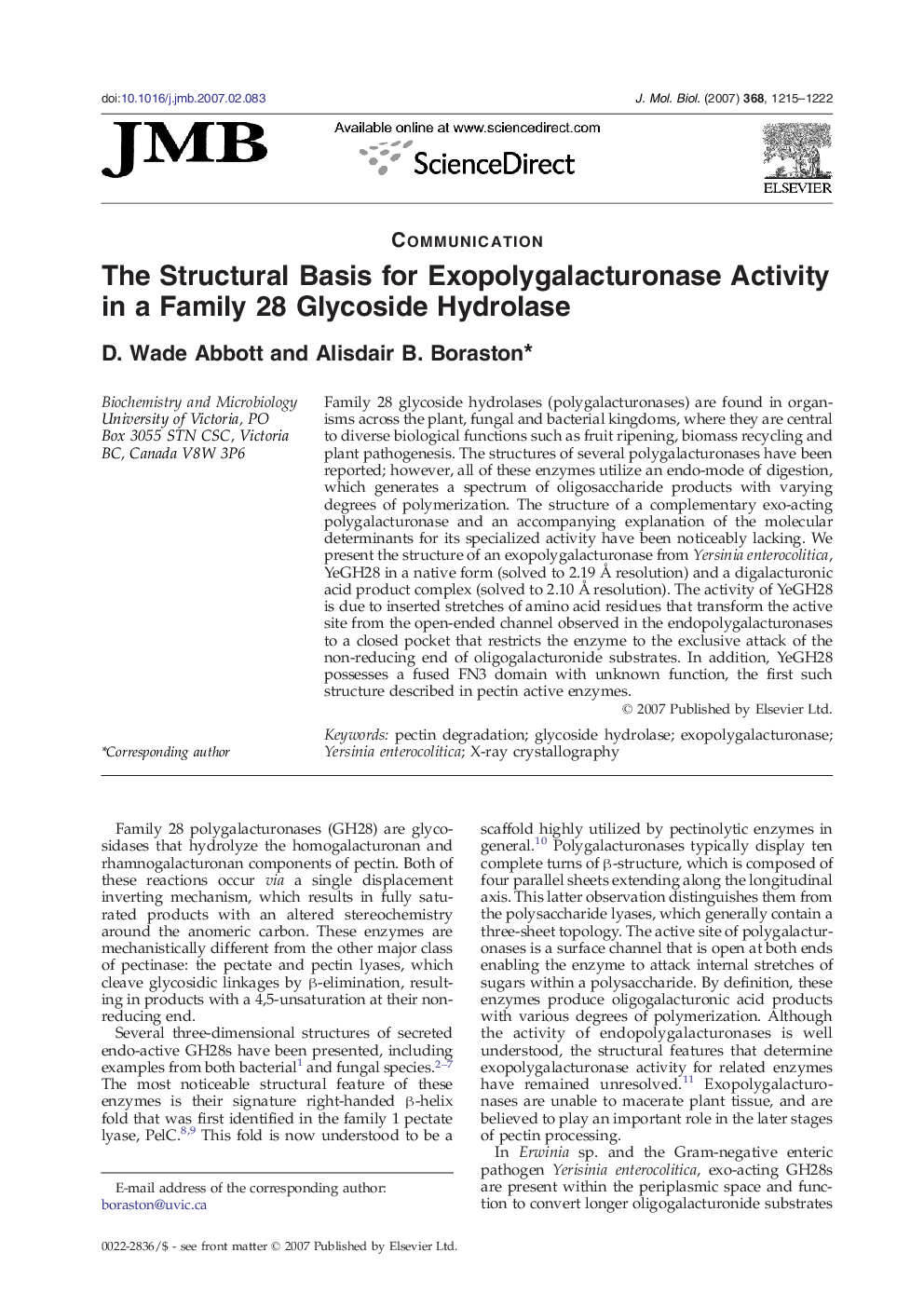| Article ID | Journal | Published Year | Pages | File Type |
|---|---|---|---|---|
| 2188472 | Journal of Molecular Biology | 2007 | 8 Pages |
Family 28 glycoside hydrolases (polygalacturonases) are found in organisms across the plant, fungal and bacterial kingdoms, where they are central to diverse biological functions such as fruit ripening, biomass recycling and plant pathogenesis. The structures of several polygalacturonases have been reported; however, all of these enzymes utilize an endo-mode of digestion, which generates a spectrum of oligosaccharide products with varying degrees of polymerization. The structure of a complementary exo-acting polygalacturonase and an accompanying explanation of the molecular determinants for its specialized activity have been noticeably lacking. We present the structure of an exopolygalacturonase from Yersinia enterocolitica, YeGH28 in a native form (solved to 2.19 Å resolution) and a digalacturonic acid product complex (solved to 2.10 Å resolution). The activity of YeGH28 is due to inserted stretches of amino acid residues that transform the active site from the open-ended channel observed in the endopolygalacturonases to a closed pocket that restricts the enzyme to the exclusive attack of the non-reducing end of oligogalacturonide substrates. In addition, YeGH28 possesses a fused FN3 domain with unknown function, the first such structure described in pectin active enzymes.
